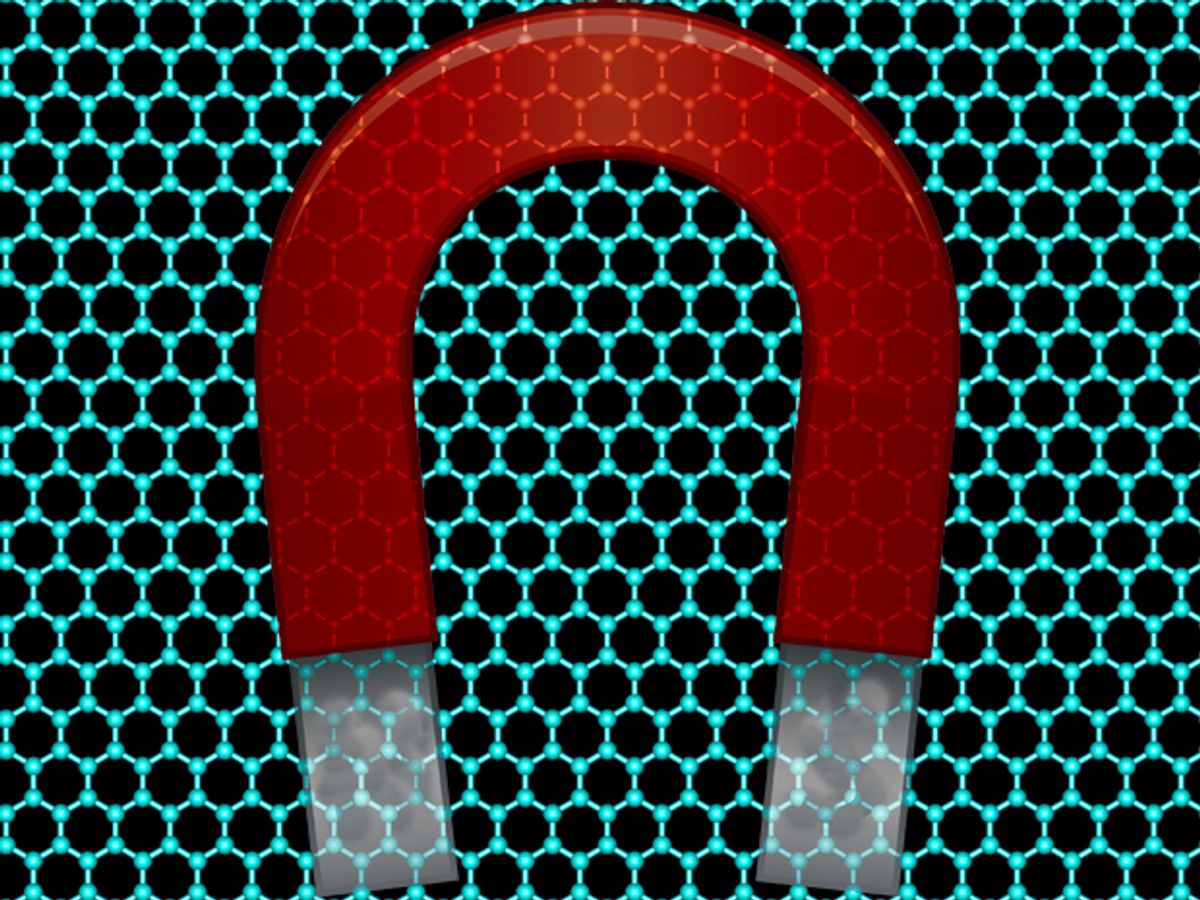Combining the electric with the magnetic in one material has become a hot research pursuit lately. First researchers exploited the natural properties of bismuth ferrite. Then researchers engineered both electric and magnetic polarization in perovskite—a material that does not have that property naturally.
Now researchers at the University of California Riverside have brought this combination of the electric and the magnetic to the wonder material, graphene.
Of course, it is possible to induce magnetism in graphene by doping the material with magnetic impurities. Unfortunately, that process comes at the high cost of eliminating all the attractive electrical properties of graphene, such as its high conductivity.
The UC Riverside researchers found a way to make graphene magnetic without sacrificing its attractive electrical properties.
“This is the first time that graphene has been made magnetic this way,” said Jing Shi, a professor of physics and astronomy, whose lab led the research, in a press release. “The magnetic graphene acquires new electronic properties so that new quantum phenomena can arise. These properties can lead to new electronic devices that are more robust and multi-functional.”
In research published in the journal Physical Review Letters, the UC Riverside researchers were able to achieve this feat by bringing a sheet of graphene very close to a magnetic insulator—an electrical insulator with magnetic properties.
In this case, the magnetic insulator was an atomically flat yttrium iron garnet (YIG) ferromagnetic thin film that the researchers had actually grown using laser molecular beam epitaxy.
With the graphene so close to the iron-based magnetic insulator, the graphene simply borrowed its magnetic properties. The trick was to ensure that the graphene adopted the magnetic properties without losing its electrical ones. Because the yttrium iron garnet is an electric insulator it did not disrupt graphene’s electrical transport properties.
In experiments, the research team demonstrated that the graphene had become magnetic by exposing it to an external magnetic field at which time it revealed graphene's Hall voltage—a voltage in the perpendicular direction to the current flow—was linearly dependent on the magnetization of the yttrium iron garnet. This provided the confirmation that the graphene sheet had turned magnetic.
As we have seen with other materials recently, the combination of both electrical and magnetic properties in one material opens up possibilities in information storage, especially through the use of spintronics.
Dexter Johnson is a contributing editor at IEEE Spectrum, with a focus on nanotechnology.



